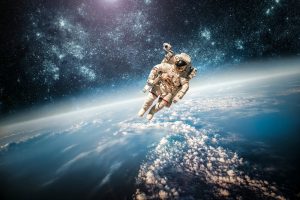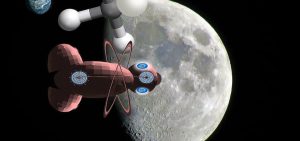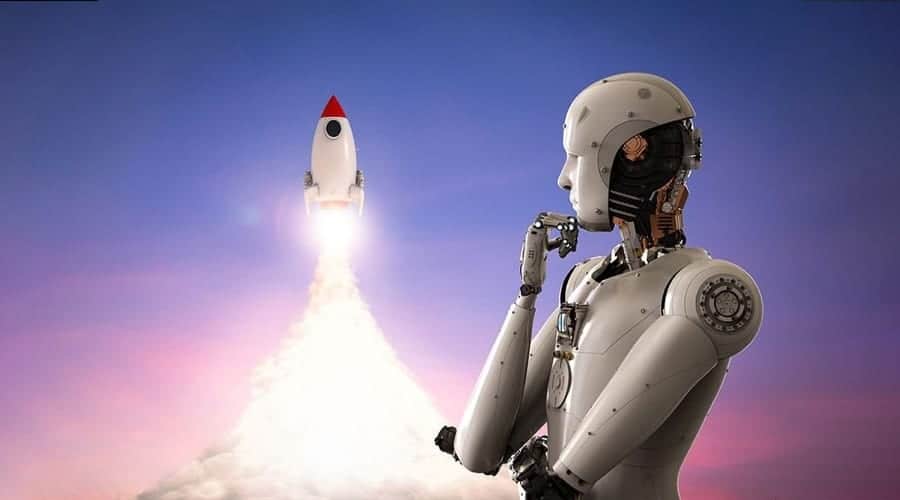Like many other sectors, the space exploration process utilizes Artificial Intelligence (AI) and robotics to advance its purpose.
This takes us to places we’ve never been before. Emerging technologies such as machine learning and deep learning provide opportunities for organizations involved in space programs to incorporate AI and robotics.
AI and Robots aid in space exploration by mechanically designing planetary rovers, space manipulators, actuators and sensors of space robots, end-effectors/tools of space robots, reconfigurable robots, and robot mobility systems.
In this article, we will notice the role of AI and robotics in space exploration.
Read Also: How to start a successful blog in 2023
Case examples of Robots and AI in space explorations
1. The Canadian Space Association launched Dextre, a robotic arm created to test new tools and robotics techniques and install and repair minor equipment like outside cameras or the 100-kg batteries used on the Space Station.
2. The largest moons of Jupiter and Saturn, as well as Saturn’s rings, were to be studied up close by Voyager 1 and Voyager 2.
These robots are closer to Pluto than Earth or the sun and constantly communicate via the Deep Space Network (DSN).
3. Robonaut 2 is a follow-up to the ground-based Robonaut 1, created to assist astronauts during spacewalks. The first US-made robot on the ISS was also referred to as R2.
It joined the crew in 2011 but lacked legs. So in 2014, legs were added.
Artificial Intelligence’s Role in Space Exploration

The function of artificial intelligence (AI) in space exploration is becoming increasingly significant as it evolves.
AI has the ability to transform space exploration by bringing innovations and insights into the cosmos and allowing for more efficient and effective space exploration. Some of these are highlighted below;
- AI may swiftly and effectively process vast amounts of data, allowing scientists to find trends and patterns that would otherwise be impossible to discern.
- AI, for instance, can analyze data from satellites and spacecraft to find interesting celestial objects.
- AI can be used to find suitable locations for landing on planets and moons and spot any hazards or impediments in space.
- Automation of several areas of space exploration is also possible with AI.
- Robotic spacecraft, for instance, may now explore a greater portion of the cosmos because of AI control.
- AI can also be used to analyze sensor data from spacecraft, assisting researchers in spotting potential dangers and barriers.
- AI can also increase the precision of spacecraft navigation and guidance systems. AI can analyze data from a wide range of sources, including.
- To find potential risks and obstructions, AI can analyze data from various sources, such as cameras, radar, and lidar.
- The accuracy of navigation and guidance systems can be increased by using AI to analyze data from the spacecraft’s sensors to identify prospective landing spots.
- AI may be used to create algorithms to analyze sensor data, find potential risks, and locate possible landing locations.
- AI can create new technologies for sensor data analysis and robotic spacecraft control.
Artificial intelligence has the potential to revolutionize space exploration by bringing new insights into the cosmos and enabling more efficient and effective space travel.
Read Also: The Impact of AI On The Future Of Work
How Robotics is Revolutionising Space Exploration
Present and future space exploration has been revolutionized by robotics, enabling humanity to travel farther and explore like never before.
Robotics technology allows us to send robots to faraway planets and moons for exploration, giving us precious information and insights into the cosmos.
- Robots are perfect for space exploration because they can do complex tasks under harsh conditions.
- They can travel great distances, explore dangerous terrain, and work in sweltering heat. This enables us to travel to locations that would be too risky or challenging for humans to reach.
- Robots can also be trained to perform jobs independently, allowing them to work without human supervision. This enables us to travel to far-off locations without human intervention.
New propulsion systems are also being developed using robotics technology to enable humanity to travel further into space. Because of this technology, we can now create spaceships that can travel farther and faster than ever.
Additionally, new instruments and technology for space exploration are being developed using robotics. This includes new sensors, cameras, and other tools that can be used to collect data from far-off planets and moons.
Robotics is reshaping the future of space exploration, enabling us to go farther and deeper than ever before.
This technology allows us to acquire priceless insights into the universe while also developing new tools and technologies for space exploration.
However, like with any new technology, robotic space travel has advantages and disadvantages.
The ability to collect data without using human astronauts is the fundamental advantage of robotic space exploration.
Robotic probes can be launched to distant planets and moons to collect data on their composition and environment.
We may utilize this knowledge to learn more about the cosmos and its mysteries.
Furthermore, because robotic probes can cover a considerably broader area than human missions, they can be employed to look for signs of extraterrestrial life.
Read Also: The future of transportation:self-driving cars and the rise of AI
The high cost of Robotic probes is a disadvantage
Despite the potential benefits, there are several drawbacks to robotic space travel. One of the most significant difficulties is the expense.
Robotic probes are significantly more expensive than human expeditions, and developing and launching them can be prohibitively costly. Furthermore, robotic probes have limited capacities.
For example, they are unable to make judgments or take action in an emergency, and they are unable to repair themselves if something goes wrong.
Robotic space travel can change how we explore the universe. While there are some drawbacks, the advantages greatly exceed the drawbacks.
Robotic probes could become a valuable tool for understanding the universe and hunting for extraterrestrial life as technology progresses.
Investigating the Role of Robotics in Space Exploration Missions
The employment of robotics in space exploration missions has transformed the space industry. Robotics has enabled scientists to explore space in previously unimaginable ways.
Robotics has come a long way, from the first successful deployment of a robotic rover on the moon to the recent successful launch of the Perseverance rover to Mars.
Robotics has wholly changed how space exploration is done, from the first successful deployment of a robotic rover on the moon to the most recent successful flight of the Perseverance rover to Mars.
Additionally, robotics allows scientists to explore space more effectively and accurately. Robotic rovers can be dispatched to faraway planets and moons to gather information and samples that researchers on Earth can later examine.
This enables researchers to look for evidence of life and better comprehend the makeup of distant worlds. Robotic rovers can investigate dangerous regions like volcanoes or deep-sea vents without endangering human life.
This has enabled scientists to learn essential things about these harsh conditions that would have previously been impossible to understand.
Read Also: The future of transportation:self-driving cars and the rise of AI
Opportunities and Risks of Robotics and Automation in Space

Robotics and automation have accelerated the space industry’s evolution. While potentially posing specific potential concerns, these technologies give intriguing chances to explore space and create new applications.
Exploration of space is becoming more efficient because of robotics and automation. Robots, for instance, can be employed in space research and the exploration of far-off planets and moons.
Moreover, since robots can carry out duties that would typically need an astronaut, automation can also be employed to lower the cost of space trips.
New applications in space are also being developed using robotics and automation. Robots can be employed, for instance, in constructing satellites and space stations.
Thereby increasing the effectiveness of satellite-to-ground station communication. However, the employment of robotics and automation in space carries specific potential hazards.
A robotic system failure, for instance, might seriously harm a spacecraft or other space infrastructure.
Additionally, if an automated system is compromised, it might be utilized to damage other systems or interfere with communications.
Therefore, considering potential hazards before implementing these technologies in space is essential. Overall, space exploration has been significantly impacted by AI and robotics.
It has completely changed how space exploration is done by allowing scientists to do it more accurately, safely, and affordably. Ai and Robotics will be significant in space exploration even as technology advances.

